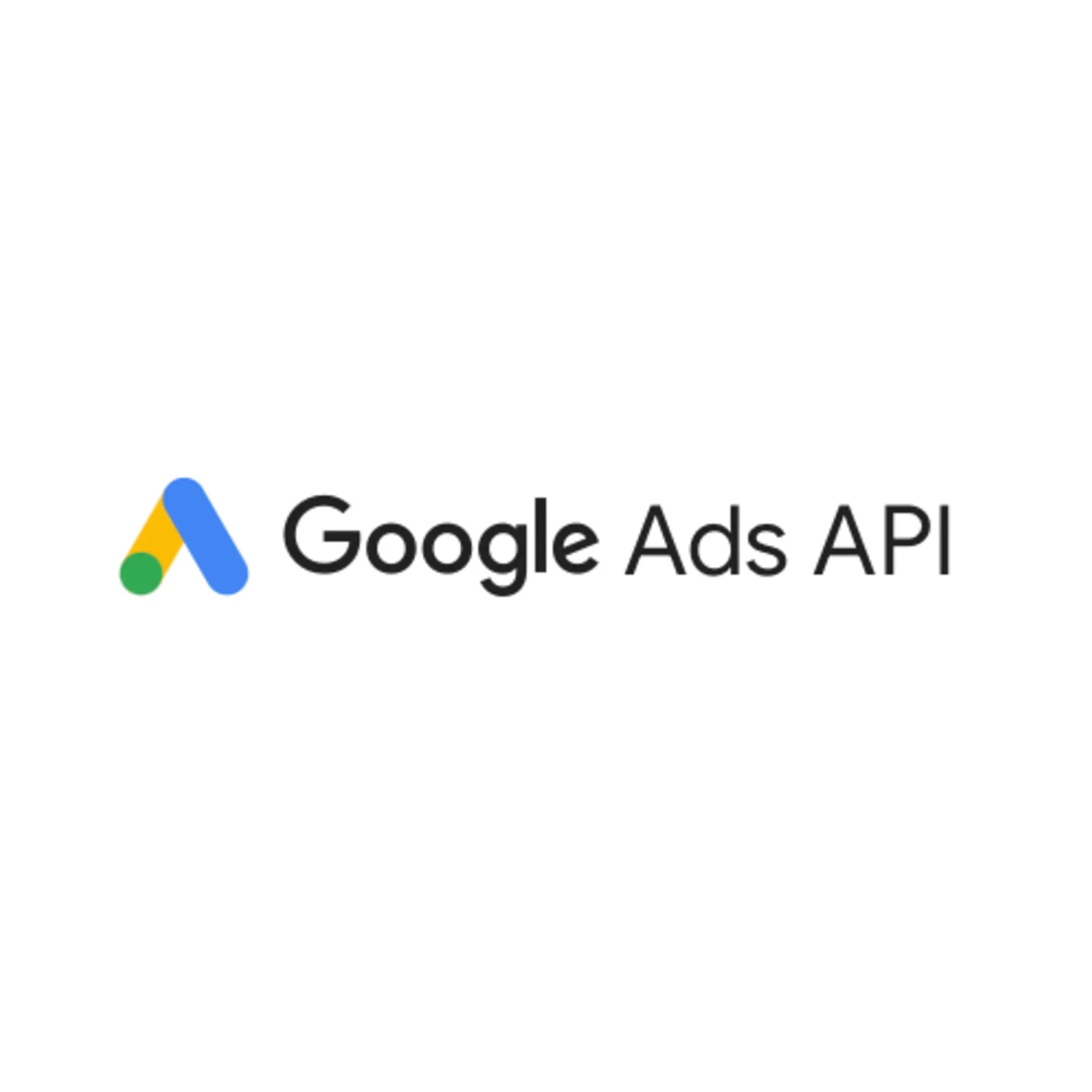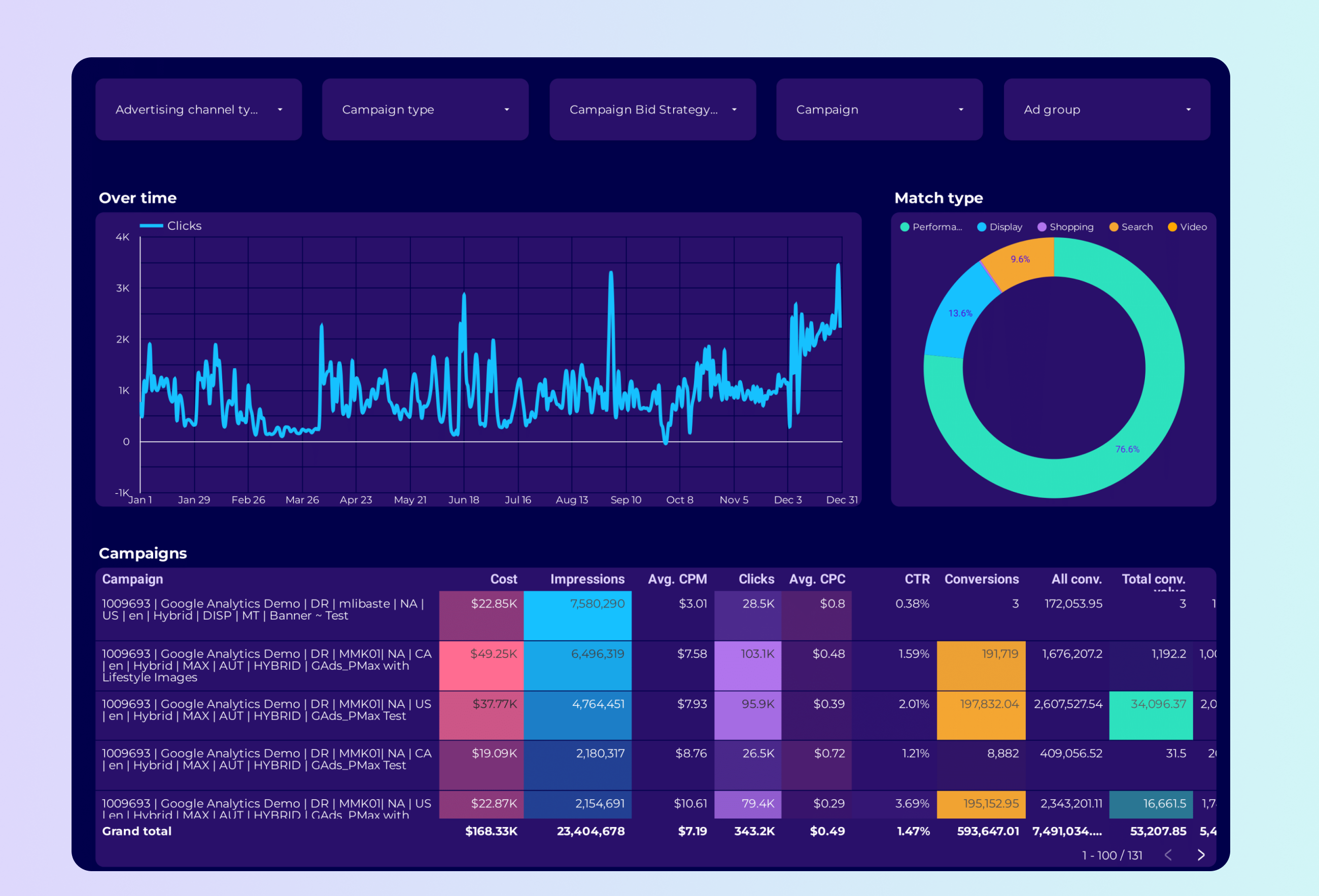
Google Ads Performance Max: Complete Buyer's Guide
Google's flagship AI-driven campaign optimization platform
Google Ads Performance Max represents Google's flagship AI-driven campaign optimization platform that automates audience targeting and budget allocation across Search, YouTube, Display, and Maps inventory through unified machine learning algorithms[117][121].
Market Position & Maturity
Market Standing
Google Ads Performance Max maintains a dominant market position within the AI audience targeting landscape, leveraging Google's substantial infrastructure and exclusive inventory access across Search, YouTube, Display, and Maps[116][127].
Company Maturity
Company maturity indicators reflect Google's established market presence and substantial technical infrastructure investment. Platform stability metrics appear strong based on Google's robust infrastructure capabilities[122].
Growth Trajectory
Growth trajectory analysis shows Performance Max representing Google's strategic focus on AI-driven advertising automation, with 2025 feature developments including demographic exclusions and device targeting addressing historical control limitations[119][132].
Industry Recognition
Industry recognition stems from Google's established position as a leading advertising technology provider, with Performance Max serving as the flagship demonstration of the company's AI capabilities.
Strategic Partnerships
Strategic partnerships include integration capabilities with major CRM and marketing automation platforms, though some enterprises report extended integration timelines for complex martech stacks[126].
Longevity Assessment
Vendor stability remains exceptionally strong with Google's substantial market position and continued platform investment, providing buyers with confidence in long-term viability and continued operation[121][126].
Proof of Capabilities
Customer Evidence
Enhance Media achieved 514 applications at £4.17 CPA using Performance Max's cross-channel inventory optimization[123]. SKB Bank experienced a 32% increase in response rates after resolving initial data siloing issues and implementing Performance Max's unified audience targeting capabilities[129]. Volkswagen successfully reduced cost-per-lead by 22% through Performance Max's AI intent scoring capabilities[79].
Quantified Outcomes
Enhance Media achieved 514 applications at £4.17 CPA[123]. SKB Bank experienced a 32% increase in response rates[129]. Volkswagen reduced cost-per-lead by 22%[79].
Case Study Analysis
Enhance Media's implementation showcased the platform's ability to automatically allocate budget across Search, Display, and YouTube inventory based on real-time performance signals[123]. SKB Bank's case study illustrates both the platform's potential when properly implemented and the critical importance of data infrastructure quality for optimal performance outcomes[129]. Volkswagen's example demonstrates the platform's performance potential while highlighting the organizational change management requirements for successful deployment[79].
Market Validation
Market validation evidence shows Performance Max adoption across retail, SaaS, and B2B services sectors, with AI performance ratings indicating strong scores for automated bidding capabilities[122][123].
Competitive Wins
Competitive wins include customer preference patterns favoring Performance Max for scalability, with many multi-national advertisers using it as a primary acquisition channel despite reporting challenges in search term visibility[122][131].
AI Technology
Performance Max's AI capabilities center on dynamic audience targeting through machine learning algorithms that process substantial data inputs to optimize cross-channel performance in real-time[117][121].
Architecture
The core AI architecture leverages Google's proprietary machine learning models to predict user intent and conversion likelihood across Search, YouTube, Display, and Maps touchpoints[119][130].
Primary Competitors
Primary competitors include Adobe Advertising Cloud for predictive analytics leadership, Microsoft Advertising for alternative inventory access, Amazon DSP for e-commerce focus, and specialized solutions like Salesforce Einstein for B2B predictive engagement scoring[116][127][132].
Competitive Advantages
Competitive advantages stem from Google's exclusive inventory access, particularly YouTube engagement signals and Search intent data that competitors cannot replicate[116][127].
Market Positioning
Market positioning shows Performance Max accounting for significant portions of enterprise retail media budgets, with customer preference patterns favoring the platform for scalability among multi-national advertisers[122][131].
Win/Loss Scenarios
Win/loss scenarios indicate Performance Max wins when organizations prioritize cross-channel automation and have robust first-party data infrastructure, but loses when companies require granular control, operate primarily outside Google's ecosystem, or lack technical resources for proper implementation[125][130][126].
Key Features

Pros & Cons
Use Cases
Pricing
Featured In Articles
Comprehensive analysis of AI Audience Targeting for AI Marketing & Advertising for AI Marketing & Advertising professionals. Expert evaluation of features, pricing, and implementation.
How We Researched This Guide
About This Guide: This comprehensive analysis is based on extensive competitive intelligence and real-world implementation data from leading AI vendors. StayModern updates this guide quarterly to reflect market developments and vendor performance changes.
132+ verified sources per analysis including official documentation, customer reviews, analyst reports, and industry publications.
- • Vendor documentation & whitepapers
- • Customer testimonials & case studies
- • Third-party analyst assessments
- • Industry benchmarking reports
Standardized assessment framework across 8 key dimensions for objective comparison.
- • Technology capabilities & architecture
- • Market position & customer evidence
- • Implementation experience & support
- • Pricing value & competitive position
Research is refreshed every 90 days to capture market changes and new vendor capabilities.
- • New product releases & features
- • Market positioning changes
- • Customer feedback integration
- • Competitive landscape shifts
Every claim is source-linked with direct citations to original materials for verification.
- • Clickable citation links
- • Original source attribution
- • Date stamps for currency
- • Quality score validation
Analysis follows systematic research protocols with consistent evaluation frameworks.
- • Standardized assessment criteria
- • Multi-source verification process
- • Consistent evaluation methodology
- • Quality assurance protocols
Buyer-focused analysis with transparent methodology and factual accuracy commitment.
- • Objective comparative analysis
- • Transparent research methodology
- • Factual accuracy commitment
- • Continuous quality improvement
Quality Commitment: If you find any inaccuracies in our analysis on this page, please contact us at research@staymodern.ai. We're committed to maintaining the highest standards of research integrity and will investigate and correct any issues promptly.